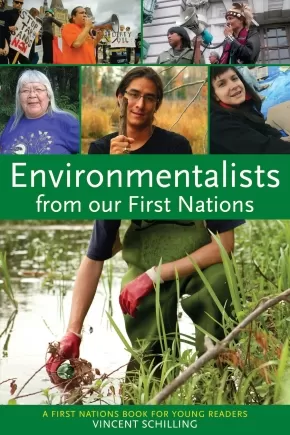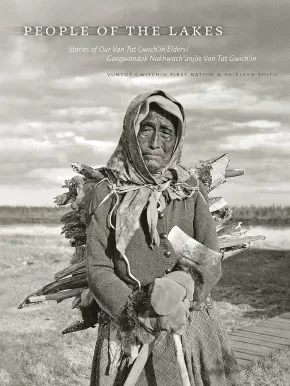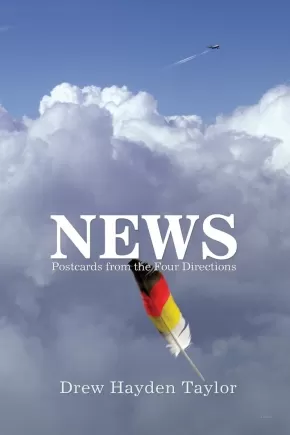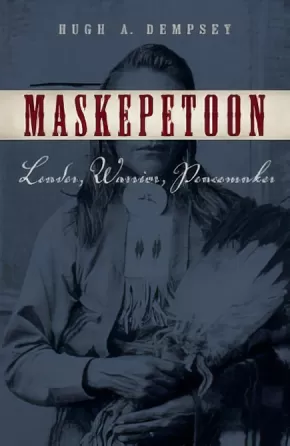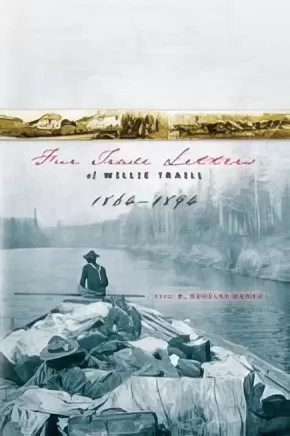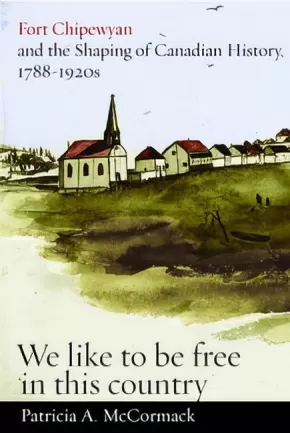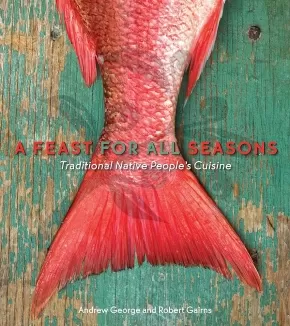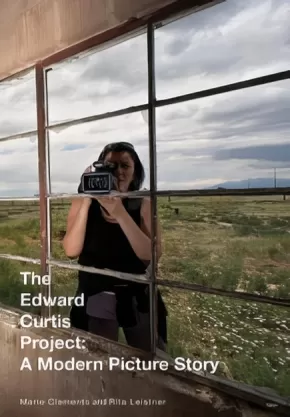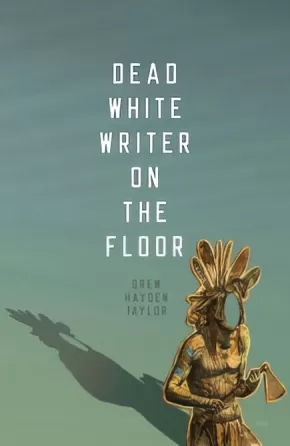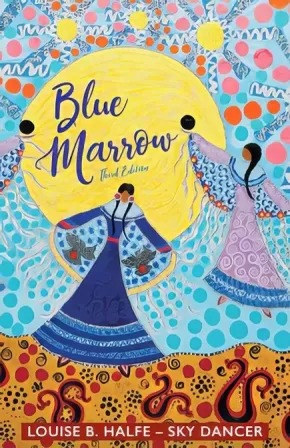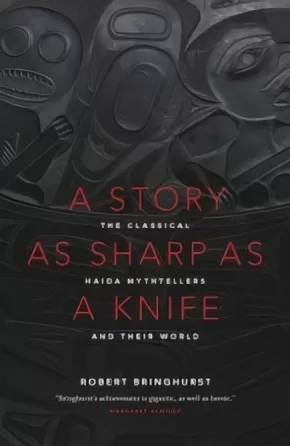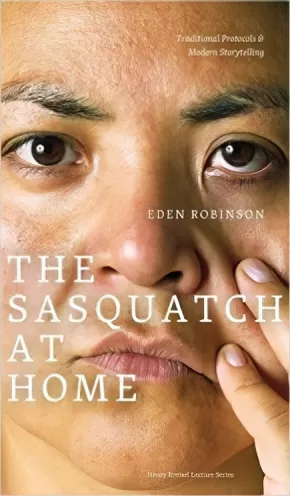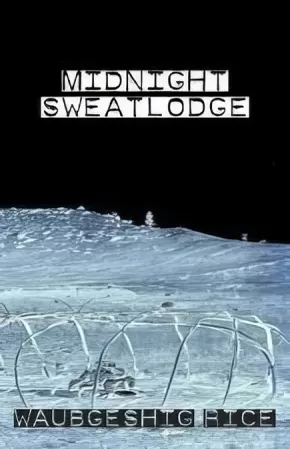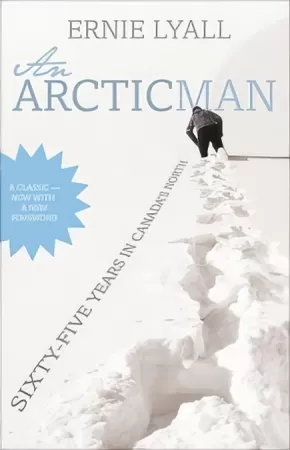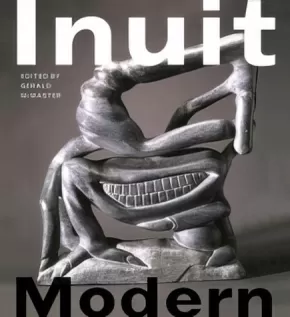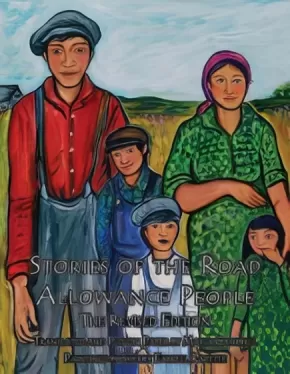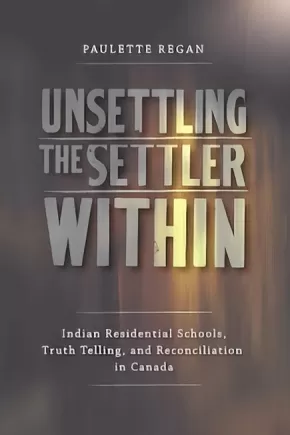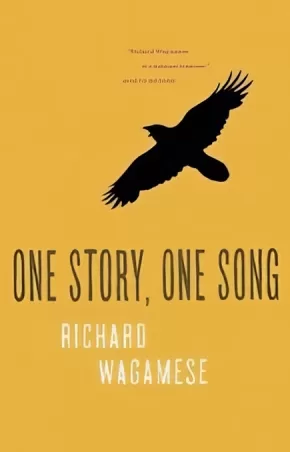
Canadian Indigenous Books for Schools 8 - 12 2011-2012
1
-
15
of
21 Results;
Sort By
Go To
of 2
Environmentalists from our First Nations
$10.95
Format:
Paperback
Text Content Territories:
Indigenous American; Indigenous Canadian;
ISBN / Barcode: 9781897187982
Synopsis:
Synopsis:
Like the other books in the First Nations Series for Young Readers, this book offers ten short and engaging biographies of First Nations/Native activists who advocate not only for the environment but for Native rights. Their stories are full of highs and lows, triumphs and setbacks. Environmental trailblazers, these men and women are role models for children everywhere.
The men and women profiled here are united by their work to protect the environment and to support indigenous rights. Their stories take us from the Arctic National Wildlife Refuge in Alaska to the Black Mesa in Arizona.
Melina Laboucan-Massimo uses her passion to stop oil extraction in Alberta’s tar sands.
Winona LaDuke is a voice for reclaiming Native lands, advocating renewable energy resources, and protecting Native cultures.
Clayton Thomas-Muller is a dynamic advocate for indigenous self-determination and campaigner against tar sands extraction.
Ben Powless brings his youthful energy and skills to addressing climate change issues.
Tom Goldtooth protects sacred sites and organizes global direct-action campaigns for the environment.
Grace Thorpe is a grandmother who dedicated her retirement years to keeping Native reservations from becoming nuclear waste dumps.
Sarah James is a voice from northern Alaska defending the Porcupine caribou herd and the Arctic National Wildlife Refuge.
Enei Begaye & Evon Peter are married activists who work as a team on environmental issues and sustainable strategies for Native people.
Klee Benally uses the media to empower Native communities in their fight for environmental justice.
Teague Allston works to ensure a tribal voice is heard in Washington DC.
Reviews
"These short biographies of environmentalists are sure to engage a whole classroom of readers. From the focus on a particular environmental crisis, to a description of each person's native heritage, to the writing style and level, the stories are accessible to readers young and old." — Canadian Teacher Magazine, March 2012
Educator & Series Information
This book is part of the First Nations Series for Young Readers. Each book is a collection of biographies of First Nations, Métis, and Inuit women and men who are leaders in their fields of work, in their art, and in their communities. For ages 9-14.
Additional Information
128 pages | 6.00" x 9.00"
People of the Lakes: Stories of Our Van Tat Gwich'in Elders / Googwandak Nakhwach'anjoo Van Tat Gwich'in
$44.99
Format:
Paperback
Text Content Territories:
Indigenous Canadian; First Nations; Dene; Dinjii Zhuh (Gwich'in);
ISBN / Barcode: 9780888645050
Synopsis:
Synopsis:
Many people have a mental picture of the Canadian north that juxtaposes beauty with harshness. For the Van Tat Gwich'in, the northern Yukon is home, with a living history passed on from elders to youth. This book consists of oral accounts that the Elders have been recording for 50 years, representing more than 150 years of their history, all meticulously translated from Gwich'in. Yet this is more than a gathering of history; collaborator Shirleen Smith provides context for the stories, whether they are focused on an individual or international politics. Anthropologists, folklorists, ethnohistorians, political scientists, economists, members of First Nations, and readers interested in Canada's northernmost regions will find much to fascinate them.
Additional Information
|
News: Postcards From The Four Directions
$24.95
Format:
Paperback
Text Content Territories:
Indigenous;
ISBN / Barcode: 9780889226432
Synopsis:
Synopsis:
Exotic postcards from playwright, novelist and screenwriter Drew Hayden Taylor's globetrotting adventures, with news about aboriginal peoples around the world.
In this collection of short humourous essays originally written for the popular media, playwright, novelist and screenwriter Drew Hayden Taylor sends his readers fascinating and exotic postcards from his globetrotting adventures, always on the lookout for the NEWS about aboriginal peoples around the world. Organized around the thematics suggested by the four cardinal directions central to the Ojibwa peoples-East for beginnings and youth; South for journeys both physical and spiritual; West for maturity and responsibility; and North for contemplation and wisdom; these communiques are sent not so much to instruct as they are to delight. Never without a healthy dose of irony, humour and often unabashed laughter, these "postcards" offer their readers unexpected insights into the intense and often hilarious complexities of our new multicultural reality. Throughout his travels, Taylor has discovered that the four cardinal points are central to most First Nations' teachings concerning the landscape and how to live on it to survive, build families and communities, create cultures and develop notions of spirituality and identity. This is not, however, a seamless or even necessarily recognizable paradigm from place to place throughout North America, and there is plenty of room for doubt, misunderstandings and unintentional social faux pas even among and between aboriginal peoples themselves. One of the great discoveries of this collection is that each of our First Nations boasts its own traditions-go a hundred miles in any direction and you are no longer on certain ground with respect to the meanings, attributes, even the colours definitive of these cardinal points of the social compass.
Additional Information
|
Maskepetoon: Leader, Warrior, Peacemaker
$19.95
Format:
Paperback
Text Content Territories:
Indigenous Canadian; First Nations; Cree (Nehiyawak);
ISBN / Barcode: 9781926613680
Synopsis:
Synopsis:
As a leader, Maskepetoon was respected for his skill as a hunter, his generosity and his wisdom. He was considered a "lucky" chief, a man who found buffalo on the edge of the plains, who avoided unnecessary conflicts with enemies, but protected his camp like a mother grizzly with her cubs. And in the turbulent mid-1800s, that's exactly the kind of leader the Rocky Mountain Cree needed. Maskepetoon followed his own inclinations for peace and friendship. He formed allegiances with missionaries and guided settlers through the Rockies. Yet if necessary he could kill with impunity, rule with an iron hand and show no mercy where he believed none should be shown. He transformed his people from woodland trappers to buffalo hunters and from woodsmen to prairie dwellers, always keeping their interests at heart. Hugh Dempsey's account of the legendary chief and his life includes insights from the Cree people of today, including descendants of Maskepetoon, and new information on the chief of the same name who lived in the United States during this time.
The Life and Death of Anna Mae Aquash
$19.95
Format:
Paperback
Text Content Territories:
Indigenous Canadian; First Nations; Mi'kmaq;
ISBN / Barcode: 9781550284225
Synopsis:
Synopsis:
In February 1976, the body of a woman was found on the Pine Ridge Indian Reservation in South Dakota. The official autopsy attributed her death to exposure. Both hands were severed and sent to Washington for fingerprinting, and the body was hastily buried without legal documents.
When the FBI identified the woman as Anna Mae Aquash, a Canadian Mi'kmaq active in the American Indian Movement, her family and friends demanded a second autopsy. It revealed that Anna Mae had been killed by a bullet fired execution-style into the back of her head.
Anna Mae Aquash worked alongside Leonard Peltier and other leading members of the American Indian Movement. Like Peltier, whose case is now a cause célèbre, Aquash was targeted by the FBI. No serious investigation has ever been undertaken to determine the identities of her murderers, but evidence points to the involvement of American law enforcement officials.
In this second edition of this book, former federal Member of Parliament Warren Allmand contributed a foreword, explaining the links between Peltier and Aquash's cases.
Though some of the information in this book has become outdated as more information became available in 2001 and later about the complex facts surrounding Aquash's death, this book stands as the only publication that tells the story of her life and the puzzling circumstances of her murder.
Fur Trade Letters of Willie Traill 1864-1893
$34.95
Format:
Paperback
Text Content Territories:
Indigenous Canadian;
ISBN / Barcode: 9780888644602
Synopsis:
Synopsis:
Son of Catharine Parr Traill and nephew of Susanna Moodie, William Edward Traill, better known as Willie, came by his literary talent naturally. He found employment with the Hudson’s Bay Company in what was to become the Canadian West. His letters home are a rich and detailed portrait of domestic life in the fur trade of the Northwest between 1864 and 1893. At turns gritty then deeply touching but always fascinating and informative, the Willie Traill letters throw open a window on the joys and heartbreaking challenges of family life in the service of the fur trade.
Reviews
"As Michael Peterman writes in the Foreword, Willie Traill went west in 1864 and devoted his entire working life to the Hudson's Bay Company. His career took him westward from the Manitoba territory to Fort Ellice and many other posts before he completed his tenure at Fort St. James in British Columbia. He and Harriet, daughter of Chief Factor William MacKay, had twelve children, nine of whom survived....There are more than 250 of William Traill's personal letters extant, and 177 are represented in Fur Trade Letters of Willie Traill. These letters, written to family and close friends, trace Willie Traill's entire twenty-nine-year career with the Hudson's Bay company, from his days as a raw recruit to his retirement from the Company as a seasoned veteran. These letters invite readers into Willie's life as it unfolds—giving them an intimate view of the daily challenges faced by an HBC trader and his family....Willie would see Mother Nature at her worst: frosts, droughts, floods, hailstorms, famines, fires, and hordes of grasshoppers that totally destroyed crops and gardens. He would witness the dreadful smallpox, scarlet fever, and whooping cough epidemics that decimated the Plains Indians and white populations alike. He would be affected by the Red River and Noth West Rebellions, Confederation, the completion of the Trans Canada Railroad, and the virtual annihilation of the buffalo—which irreversibly destroyed the way of life of the Plains Indians." - SirReadaLot.org
Fort Chipewyan and the Shaping of Canadian History, 1788-1920s (1 in stock)
$39.95
Format:
Paperback
Text Content Territories:
Indigenous Canadian; First Nations; Dene; Denesuline (Chipewyan);
ISBN / Barcode: 9780774816694
Synopsis:
Synopsis:
The story of the expansion of European civilization into the wilderness continues to shape perceptions of how Aboriginal people became part of nations such as Canada. This groundbreaking study subverts this narrative of progress and modernity by examining Canadian nation building from the perspective of a northern community and its residents. Drawing on decades of research and fieldwork, Patricia McCormack argues that Fort Chipewyan - established in 1788 and situated in present-day Alberta - was never an isolated Aboriginal community but a plural society that stood at the crossroads of global, national, and indigenous cultures and economies. The steps that led Aboriginal people to sign Treaty No. 8 and accept scrip in 1899 and their struggle to maintain autonomy in the decades that followed reveal that Aboriginal peoples and others can - and have - become modern without relinquishing cherished beliefs and practices. This meticulously researched study of the most famous and best studied of the Treaty No. 8 communities not only provides a window into the history of Canada and Alberta - it challenges the nature of history writing in Canada itself. Anyone interested in the history of First Nations, northern communities, or the way historians and local communities approach and understand the past should read this book.
A Feast for All Seasons: Traditional Native Peoples' Cuisine
$24.95
Format:
Paperback
Text Content Territories:
Indigenous Canadian;
ISBN / Barcode: 9781551523682
Synopsis:
Synopsis:
Traditional North American Native peoples' cuisine has existed for centuries, but its central tenet of respecting nature and its bounty have never been as timely as they are now. Andrew George, of the Wet'suwet'en Nation in Canada, is a well-respected aboriginal chef and instructor who has spent the last twenty-five years promoting the traditions of First Nations food. In A Feast for All Seasons, written with Robert Gairns, he has compiled aboriginal recipes that feature ingredients from the land, sea, and sky, elements of an enduring cuisine that illustrate respect for the environment and its creatures, and acknowledgment of the spiritual power that food can have in our lives.
The 120 recipes include delectable, make-at home dishes such as Salmon and Fiddlehead Stirfry, Stuffed Wild Duck, Barbecued Oysters, Pan-fried Rabbit with Wild Cranberry Glaze, Clam Fritters, and Wild Blueberry Cookies. The book also features recipes with exotic ingredients that provide a fascinating glimpse into the history of Native cuisine: Moose Chili, Boiled Porcupine, Smoked Beaver Meat, and Braised Bear.
This unique cookbook pays homage to an enduring food culture--grounded in tradition and the power of nature--that transcends the test of time.
Reviews
"A lovely cookbook ... A great gift for anyone interested in Canadian food history, First Nations or locavore diets."— Calgary Herald
"I loved that some of the recipes were simple, like the three-ingredient Baked Sweet Potato with Roasted Hazelnuts, a great accompaniment to wild game like the simple Roast Venison ... A Feast for All Seasons gives a glimpse into the purpose of the feast that brings people together." — St'at'imc Runner
Additional Information
152 pages | 8.00" x 9.00" | Paperback
The Edward Curtis Project: A Modern Picture Story
$29.95
Format:
Paperback
Text Content Territories:
Indigenous Canadian;
ISBN / Barcode: 9780889226425
Synopsis:
Synopsis:
A profoundly moving new drama by Marie Clements, combined with a spectacular contemporary photo exhibit by Rita Leistner.
Edward Curtis saw his job as that of creating a photographic record of “the vanishing race of the North American Indian.” His work therefore became as much a projection of colonial attitudes upon aboriginal peoples as it was an authentic record of their lives.
The Edward Curtis Project began when the Presentation House Theatre commissioned Marie Clements to write a play that would stage the issues raised by Curtis’ monumental but controversial achievement—to dramatize not only the creation of his twenty-volume photographic and ethnographic epic and the enormous commitment, unwavering vision, sacrifice, poverty and ultimate disappointment it represented for the photographer, but also the devastating legacy that his often misrepresentative and imposed vision had on the lives of the people he touched.
Upon receiving the commission, Marie Clements immediately asked photojournalist Rita Leistner to create a parallel photographic investigation of Curtis’ work—to question the practice of documentary photography with the very medium under scrutiny. After two years of retracing Curtis’ footsteps, travelling to First Nations communities throughout North America, Clements finally felt that between them: “We were making our own pictures out of our own beliefs and they were adding up. We were inside the lies and beauty of history, of gender and class, we were making a case for the future.”
This collaborative work of two artists, to take Curtis’ photographs to heart and to see who and what might live inside them today, resulted in a profoundly moving new drama by Marie Clements, and a spectacular contemporary photo exhibit by Rita Leistner. Published together here, they illustrate the trauma that the notion of a “vanishing race” has inflicted on an entire people, and celebrate the triumph of a future in which North American First Nations communities “are everywhere and it is beautiful.”
Dead White Writer on the Floor
$17.95
Format:
Paperback
Text Content Territories:
Indigenous;
ISBN / Barcode: 9780889226630
Synopsis:
Synopsis:
A funny yet thought-provoking play about identity politics. Cast of 4 men and 1 woman.
Blue Marrow
$16.50
Format:
Paperback
Text Content Territories:
Indigenous Canadian; First Nations; Cree (Nehiyawak);
Reading Level: N/A
ISBN / Barcode: 9781928120254
Synopsis:
Synopsis:
The voices of Blue Marrow sing out from the past and the present. They are the voices of the Grandmothers, both personal and legendary. They share their wisdom, their lives, their dreams. They proclaim the injustice of colonialism, the violence of proselytism, and the horrors of the residential school system with an honesty that cuts to the marrow. Speaking in both English and Cree, these are voices of hopefulness, strength, and survivance. Blue Marrow is a tribute to the indomitable power of Indigenous women of the past and of the present day.
Educator Information
This is the 3rd Edition of this book. More than twenty years since its first publication, this critically acclaimed collection is available in a redesigned edition, including an all-new interview with its celebrated author, Louise B. Halfe - Sky Dancer.
Some of the text is written in Cree.
Additional Information
120 pages | 5.50" x 8.50" | paperback | 8 illustrations
A Story as Sharp as a Knife
$28.95
Format:
Paperback
Text Content Territories:
Indigenous Canadian; First Nations; Haida;
ISBN / Barcode: 9781553658399
Synopsis:
Synopsis:
A seminal collection of Haida myths and legends; now in a gorgeous new package.
The linguist and ethnographer John Swanton took dictation from the last great Haida-speaking storytellers, poets and historians from the fall of 1900 through the summer of 1901. Together they created a great treasury of Haida oral literature in written form.
Having worked for many years with these century-old manuscripts, linguist and poet Robert Bringhurst brings both rigorous scholarship and a literary voice to the English translation of John Swanton's careful work. He sets the stories in a rich context that reaches out to dozens of native oral literatures and to myth-telling traditions around the globe.
Attractively redesigned, this collection of First Nations oral literature is an important cultural record for future generations of Haida, scholars and other interested readers. It won the Edward Sapir Prize, awarded by the Society for Linguistic Anthropology, and it was chosen as the Literary Editor's Book of the Year by the Times of London.
Bringhurst brings these works to life in the English language and sets them in a context just as rich as the stories themselves one that reaches out to dozens of Native American oral literatures, and to mythtelling traditions around the world.
The Sasquatch at Home
$12.99
Format:
Paperback
Text Content Territories:
Indigenous Canadian; First Nations; Haisla (Kitamaat); Heiltsuk (Bella Bella);
Grade Levels: 12; University/College;
ISBN / Barcode: 9780888645593
Synopsis:
Synopsis:
In March 2010 the Canadian Literature Centre hosted award-winning novelist and storyteller Eden Robinson at the 4th annual Henry Kreisel Lecture. Robinson shared an intimate look into the intricacies of family, culture, and place through her talk, "The Sasquatch at Home." Robinson's disarming honesty and wry irony shine through her depictions of her and her mother's trip to Graceland, the potlatch where she and her sister received their Indian names, how her parents first met in Bella Bella (Waglisla, British Columbia) and a wilderness outing where she and her father try to get a look at b'gwus, the Sasquatch. Readers of memoir, Canadian literature, Aboriginal history and culture, and fans of Robinson's delightful, poignant, sometimes quirky tales will love The Sasquatch at Home.
Reviews
"[Eden Robinson's] lecture reprises the Sasquatch theme from her novel, Monkey Beach. It is less a lecture than an extended poem – a love song to a place and people, a celebration of survival of places, names, and humans.... The work is filled with alternate narratives. Just when we are eagerly following a line of story or thought, out come Trickster-ish turns and teases.... Robinson seductively draws outsiders in, then sharply clarifies the limits of the welcome.... Eden Robinson brings her own literary ethics to the discussion [of the limits of cross-cultural sharing]. Her consciousness and conscientiousness permeate her fiction as well as the Sasquatch lecture. It is fitting that Paula Simons calls her 'one of Canada’s most provocative and talented writers' and also 'a moral and cultural force'." -Valerie Alia, Cantext, February 2012
Additional Information
64 pages | 14.00" x 23.00"
Midnight Sweatlodge
$18.95
Format:
Paperback
Text Content Territories:
Indigenous Canadian;
ISBN / Barcode: 9781926886145
Synopsis:
Synopsis:
Midnight Sweatlodge tells the tale of family members, friends and strangers who gather together to partake in this ancient healing ceremony. Each person seeks traditional wisdom and insight to overcome pain and hardship, and the characters give us glimpses into their lives that are both tearful and true. Rice captures the raw emotion and unique challenges of modern Aboriginal life. It’s a hard-hitting and genuine look at the struggles First Nations people face.
Additional Information
|
An Arctic Man: The classic account of sixty-five years in Canada's North (3 in Stock) - ON SALE!
$15.00 $19.95
Format:
Paperback
Text Content Territories:
Indigenous Canadian; Inuit;
ISBN / Barcode: 9780887809453
Synopsis:
Synopsis:
Ernie Lyall was born in Labrador in 1910 and joined the Hudson's Bay Company at a time when it was expanding its presence in the Eastern Arctic. He spent many years as a front-line player with the company, building stores and developing trade with the local people. He became part of the Inuit community by marrying an Inuk and together with his wife Nipisha he raised a large family, some members of which play significant roles in today's Nunavut. Ernie's fluency in both Inuktitut and English made him a key interpreter and witness to many historic events in the Baffin region for over half a century, giving him insight into both sides of the cultural divide in the North and earning him respect from many quarters. In 1949 he and his family settled in Taloyoak (then known as Spence Bay) where he eventually left the HBC to become a wildlife officer with the Government of the Northwest Territories.
Ernie's story illustrates the realities of life for Inuit in the Canadian North during the last years in their camps on the land, a world that has now in large part been lost to history. His autobiography is unique in the perspective it offers and his original 1979 text is presented here with a foreword which provides new insights into Ernie's comments linking the old Inuit world with the new one in the modern Nunavut. Ernie's children reflect the cross-cultural bridging taught them by their parents and today contribute to the economic and community development of the North through a variety of roles, including leadership in the co-operative movement, land claim boards, business and government.
An Arctic Man not only tells about Inuit life as it was actually lived on the land but also illustrates how change, southern influences and the move into permanent communities impacted their society. This book offers a window onto the remarkable transition that occurred in the Canadian Eastern Arctic for much of the twentieth century with a frankness, insight and humour that was very much a part of Ernie Lyall's straightforward everyday style.
Relatives With Roots
$17.50
Artists:
Format:
Paperback
Text Content Territories:
Indigenous Canadian; Métis;
ISBN / Barcode: 9781926795003
Synopsis:
Synopsis:
Relatives With Roots: A Story About Métis Women’s Connection to the Land is a heartfelt story about a Métis grandmother who takes her granddaughter out into the bush to teach her how to pick traditional medicines. As the granddaughter learns the traditional beliefs and stories about how the Métis people use the plants for food and medicine, she feels happy to be a Métis child with access to such wonderful cultural knowledge. This charming and vibrant book introduces young readers to key concepts in the traditional Métis worldview while focusing on the special relationship between a young Métis girl and her grandmother. Relatives With Roots is the second in a series of children’s books relating to traditional Métis values by Leah Marie Dorion. The first book, The Giving Tree: A Retelling of a Traditional Métis Story, was nominated in 2010 for a Willow Award in the Shining Willow category.
Additional Information
61 Pages | 28 cm x 21.5 cm
Jordin Tootoo: The Highs and Lows in the Journey of the First Inuit Player in the NHL - 2nd Edition
$16.95
Format:
Paperback
Text Content Territories:
Indigenous Canadian; Inuit;
ISBN / Barcode: 9781459415188
Synopsis:
Synopsis:
Hockey is a relatively new sport in Canada's North. It wasn't until 2003 that Jordin Kudluk "Thunder" Tootoo became the first Inuk to play in an NHL game. Although hockey is a rough sport to begin with, Jordin Tootoo is known for having to "fight his way through." Jordin has had more than his fair share of fights — both on and off the ice. He's had to overcome the social problems that are associated with the North, fight his way through the discrimination and culture shock he encountered after leaving Rankin Inlet and moving to Alberta to play in the Juniors, and see his way through the grief of losing his NHL-bound older brother and hero, Terence Tootoo, to suicide in 2002.
This new, updated biography explores the struggles and accomplishments of the most recognized role model for young Indigenous people today.
Eduactor & Series Information
Fry Reading Level - 4.6
This book is part of the Recordbooks Series. Recordbooks help reluctant readers understand social issues through the lens of a true story of a sports hero.
Series features:
- Ideal for reluctant readers
- Hi-lo
- Short chapters, easy-to-read format
- Great for ESL and adult students
- Writing with a flair for making history feel like novels
- Accompanied by historical photos and sports trivia
- Ideal for ages 12+
Additional Information
160 pages | 4.25" x 7.00"
Inuit Modern: Masterworks from the Samuel and Esther Sarick Collection
$24.99
Artists:
Editors:
Format:
Paperback
Text Content Territories:
Indigenous Canadian; Inuit;
Grade Levels: 12; University/College;
ISBN / Barcode: 9781553657781
Synopsis:
Synopsis:
A gorgeous retrospective on the transformation of Inuit art in the 20th century, mirroring the vast and poignant cultural changes in the North.
In response to a rapidly changing Arctic environment, Inuit have had to cope with the transition from a traditional lifestyle to the disturbing realities of globalization and climate change. Inuit art in the latter half of the 20th century reflects the reciprocal stimulus of contact with Euro-Canadians and embodies the evolution of a modern Inuit aesthetic that springs from an ancient cultural context, creating an exciting new hybridized art form. Inuit Modern: Art from the Samuel and Esther Sarick Collection situates modern Inuit art within a larger framework that reinterprets the Canadian Arctic.
Essays by leading Canadian scholars in the field including Ingo Hessel, Robert McGhee, Christine Laloude, Heather Igloliorte, Dorothy Eber and Bernadette Driscoll Engelstad examine the social, political and cultural transformation through the dynamic lens of colonial influence and agency. Inuit Modern also features interviews with David Ruben Piqtoukun and Zacharias Kunuk.
Reviews
"The work of Inuit artists has continually evolved in response to the industrialized, bureaucratic culture encroaching from the south. Inuit Modern, an opulent new coffee-table book, displays the astonishing results. The 175 pieces beautifully reproduced here span the last century." — Georgia Straight
"This book is full of treasures from one of the world's most comprehensive collections of Inuit art. With more than 175 works by Inuit artists, the reader is taken on a journey of the Inuit aesthetic as it evolves from its from traditional roots to a more contemporary and globalized art form." — Globe & Mail Top 100 for 2010
Additional Information
256 pages | 10.00" x 11.10"
Stories of the Road Allowance People: The Revised Edition
$28.50
Format:
Paperback
Text Content Territories:
Indigenous Canadian; Métis;
ISBN / Barcode: 9780920915998
Synopsis:
Synopsis:
Maria Campbell’s highly-acclaimed Stories of the Road Allowance People is the quintessential collection of traditional Michif stories. Since it was first published in 1995, this treasured resource has given voice to Métis Elders and has informed both Métis and non-Métis about the traditional Michif worldview. The Gabriel Dumont Institute is honoured to offer this invaluable book in a new edition. With a new story and introduction by Maria Campbell, new artwork by Sherry Farrell Racette and a narration component in English and in Michif, Stories of the Road Allowance People provides readers with poignant retellings of Michif traditional stories handed down from lii vyeu—the Old People.
Unsettling the Settler Within: Indian Residential Schools, Truth Telling, and Reconciliation in Canada
$34.95
Format:
Paperback
Text Content Territories:
Indigenous Canadian;
Grade Levels: University/College;
ISBN / Barcode: 9780774817783
Synopsis:
Synopsis:
In 2008 the Canadian government apologized to the victims of the notorious Indian residential school system, and established a Truth and Reconciliation Commission whose goal was to mend the deep rifts between Aboriginal peoples and the settler society that engineered the system. In Unsettling the Settler Within, Paulette Regan, a former residential-schools-claims manager, argues that in order to truly participate in the transformative possibilities of reconciliation, non-Aboriginal Canadians must undergo their own process of decolonization. They must relinquish the persistent myth of themselves as peacemakers and acknowledge the destructive legacy of a society that has stubbornly ignored and devalued Indigenous experience. With former students offering their stories as part of the truth and reconciliation processes, Regan advocates for an ethos that learns from the past, making space for an Indigenous historical counter-narrative to avoid perpetuating a colonial relationship between Aboriginal and settler peoples. A powerful and compassionate call to action, Unsettling the Settler Within inspires with its thoughtful and personal account of Regan's own journey, and offers all Canadians -- Indigenous and non-Indigenous policymakers, politicians, teachers, and students -- a new way of approaching the critical task of healing the wounds left by the residential school system.
One Story, One Song
$19.95
Format:
Paperback
Text Content Territories:
Indigenous Canadian; First Nations; Anishinaabeg; Ojibway; Wabaseemoong First Nation;
ISBN / Barcode: 9781771620802
Synopsis:
Synopsis:
A collection of warm, wise and inspiring stories from the author of the bestselling One Native Life.
Since its publication in 2008, readers and reviewers have embraced Richard Wagamese's One Native Life. In quiet tones and luminous language,wrote the Winnipeg Free Press, Wagamese shares his hurts and joys, inviting readers to find the ways in which they are joined to him and to consider how they might be joined to others.
In this book, Richard Wagamese again invites readers to accompany him on his travels. This time, his focus is on stories: how they shape us, how they empower us, how they change our lives. Ancient and contemporary, cultural and spiritual, funny and sad, the tales are grouped according to the four Ojibway storytelling principles: balance, harmony, knowledge and intuition.
Whether the topic is learning from his grade five teacher about Martin Luther King, gleaning understanding from a wolf track, lighting a fire for the first time without matches or finding the universe in an eagle feather, these stories exhibit the warmth, wisdom and generosity that made One Native Life so popular. As always, in these pages, the land serves as Wagamese' guide. And as always, he finds that true home means not only community but conversation good, straight-hearted talk about important things. We all need to tell our stories, he says. Every voice matters.
Reviews
"One Story, One Song is a collection of short stories that show how stories shape & empower us, and change our lives. The stories are grouped according to the 4 essential principles of the Ojibway traditional teachings: humility, trust, introspection, and wisdom." - The Dalai Lama Center
Additional Information
216 pages | 5.52" x 8.50" | Paperback
Sort By
Go To
of 2

